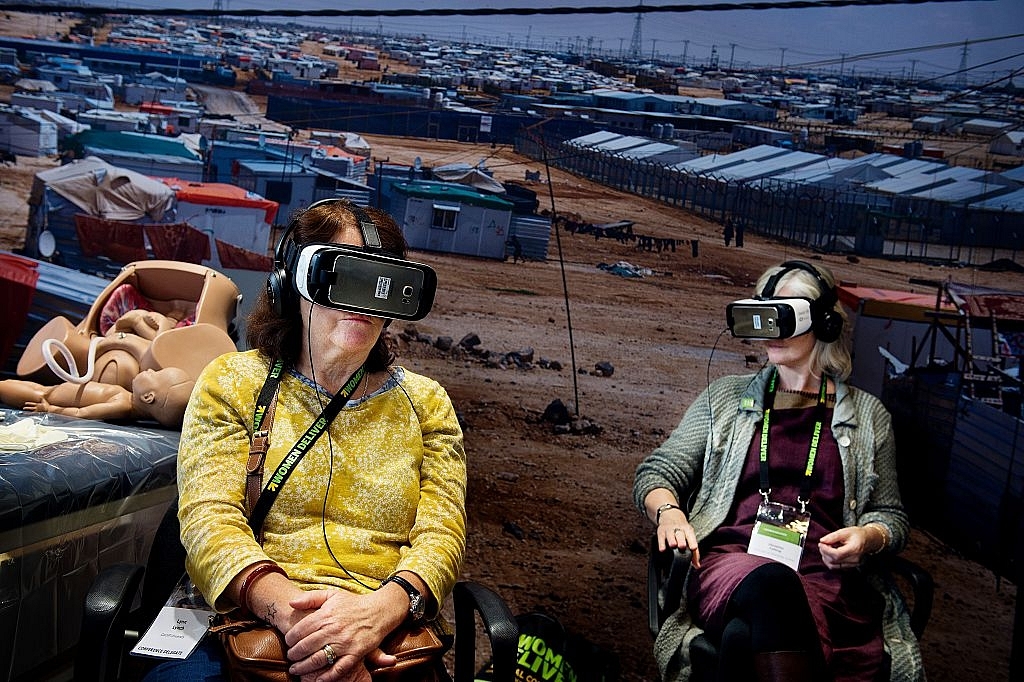Magazine
Be Afraid, Very Afraid
- We are staring at a digital future in which the whole world can be held to ransom by a few. And the bad guys are winning by a mile.

LISELOTTE SABROE/AFP/Getty Images
TECHNOLOGY HAS NO conscience of its own. It can be used for good, or, it can be used for evil. For generations, nuclear warfare has epitomised the nightmare of technology gone rogue. After you read Marc Goodman’s Future Crimes, you will forget all about uranium and plutonium; you won’t be able to turn a light switch on without feeling scared.
Goodman’s basic thesis is this: Everything runs on software. Your car, your phone, your ATM, your electricity grid. And you have no clue how crappy the software is and how easy it is to break in. Everyone is connected and, therefore, everyone is vulnerable.
The book is based on real cases from Good-
man’s career as a cop with the Los Angeles Police Department (LAPD) and as a consultant to the FBI, the Secret Service and Interpol. With each riveting and chilling case study, Goodman takes you further down the dizzying depths of the rabbit hole to the Digital Underground, where organised crime, secret agencies of nation states, independent hackers, and yes, respectable corporations, are locked in a battle for global domination of the digital world. In the meanwhile, you and I continue to click “I Agree” without bothering to read what we are agreeing to.
If you think that these things happen to others and you are too smart to fall for Nigerian scams, think again. Ever wondered why a Flashlight app for your Android phone demands access to your contact list? Everyone sells your data, and that of your friends, to data brokers. One data broker mistakenly sold personal data of 200 mil-
lion Americans to a criminal gang in Vietnam. Today that data is available to every criminal in the world. Sony and Target have been breached. Facebook has admitted that 600,000 accounts are compromised every day. LinkedIn, Snapchat, Google, Twitter have been breached. In a daring robbery, data of 145 million people were stolen at one time. Never before in history was it possible for so few to steal from so many in one shot. When you add the advancements in artificial intelligence, robotics, the internet of things, 3D printing and genetics, we are star-
ing at a future in which the world—including you—can be held to ransom by a few. And the bad guys are winning by a mile.
What can one do about it? How can we avoid a future where the best scenario is digital anarchy and where there is a statistically significant probability of a digital catastrophe?
To begin with, dropping out is not an option. We are too intertwined digitally. Goodman makes an impassioned plea for mass education of common sense digital hygiene (people like you and I are the weakest link in the digital security chain), a Manhattan Project kind of initiative that attracts the best brains towards digital security (today, the best brains are working for Crime Inc), transnational policing (digital crimes and criminals hop across servers spread over multiple countries in seconds, but law enforcement agencies have their jurisdiction bound by national boundaries), and, public accountability of software companies (if a car with as many “bugs” is released to the public, the car maker would be taken to court immediately; somehow, the software companies get away without any liability for their products).
I click on “I Agree” with Goodman.
FUTURE CRIMES: INSIDE THE DIGITAL UNDERGROUND AND THE BATTLE FOR OUR CONNECTED WORLD, Marc Goodman, Corgi, 672 pages, Rs 499.
Aditya Nath Jha is the CEO of Krayon Pictures and the Executive Producer of the National Award winning 3D animation feature film Delhi Safari. Prior to this, he was the global head of corporate marketing and branding at Infosys.
Introducing ElectionsHQ + 50 Ground Reports Project
The 2024 elections might seem easy to guess, but there are some important questions that shouldn't be missed.
Do freebies still sway voters? Do people prioritise infrastructure when voting? How will Punjab vote?
The answers to these questions provide great insights into where we, as a country, are headed in the years to come.
Swarajya is starting a project with an aim to do 50 solid ground stories and a smart commentary service on WhatsApp, a one-of-a-kind. We'd love your support during this election season.
Click below to contribute.
Latest